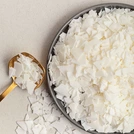
Students will learn to calculate time required for corn to progress from one development stage to another based on the amount of heat accumulated.
- Subject:
- Agriculture
- Material Type:
- Activity/Lab
- Author:
- Owl Nest Manager
- Date Added:
- 06/20/2022

Students will learn to calculate time required for corn to progress from one development stage to another based on the amount of heat accumulated.

This diagram and corresponding photos show stages of corn growth. Information sheet from DEKALB shows the relationship between growing degree units (GDUs) and estimated days to reach a certain growth stage of corn development can help growers make timely applications of fertilizers and pest/weed control.

With an understanding of plant anatomy and physiology, students will be able to problem solve to identify plants they see daily. This lesson will walk students through plant physiology and provide some activities that will help students learn the plant structures. Developed by Brent Nollette,

What are the potential uses of soybeans after they have been processed? In this lesson, students will learn about the composition of an average soybean seed and then use soy wax flakes to make their own lip balm.

Concise lesson plan template asking for the 'essential question', objectives, interest approach, content/procedure/activity, and closure/check for understanding. Developed by Matt Kriefels.

This resource was created by Dylan Huber, in collaboration with Dawn DeTurk, Hannah Blomstedt, and Julie Albrecht, as part of ESU2's Integrating the Arts project. This project is a four year initiative focused on integrating arts into the core curriculum through teacher education, practice, and coaching.

How are the majority of plants in our world classified into groups? In this lesson, students will explore the similarities and differences that exist between the structures of monocot and dicot plants through the context of a corn and soybean plant.

This lesson covers plant processes including photosynthesis, respiration, and transpiration. This represents a portion of the Introduction to Agriculture, Food, and Natural Resources (AFNR) series in Nebraska middle and high school agricultural education.

This lesson presents an overview of the importance of plants; the main parts of a plant; the types of each of the plant parts; and the relationship of each part to fruits, nuts, and vegetables. This represents a portion of the Introduction to Agriculture, Food, and Natural Resources (AFNR) series in Nebraska middle and high school agricultural education.